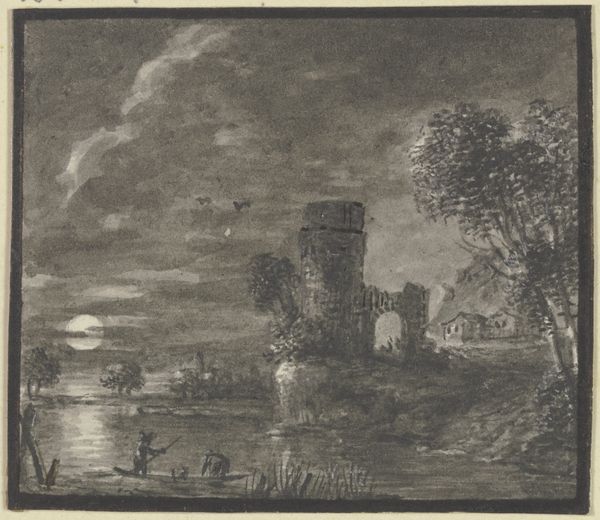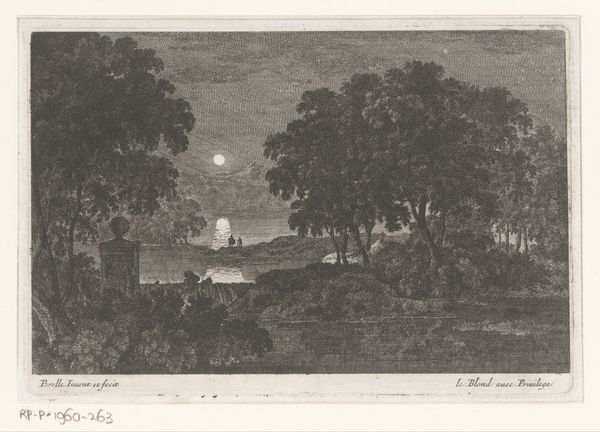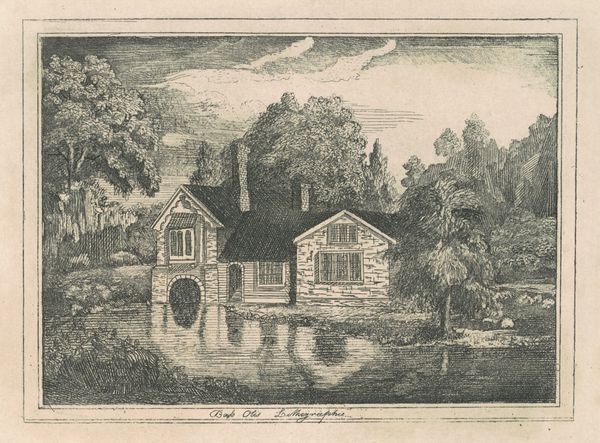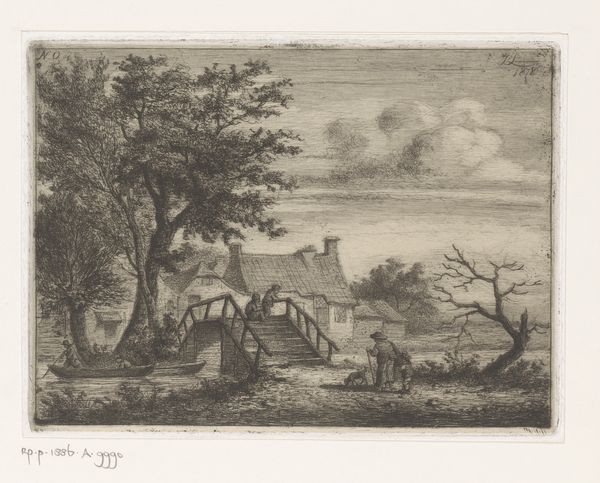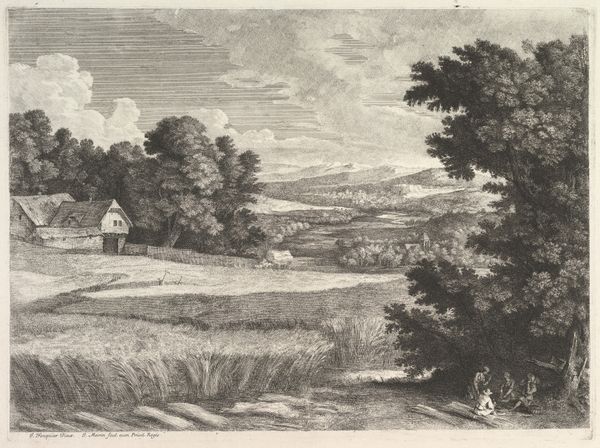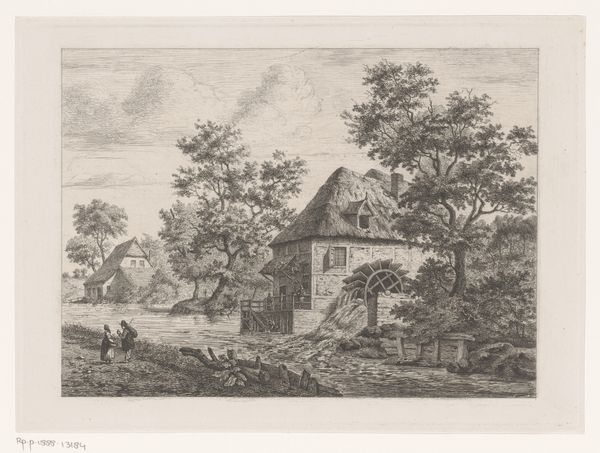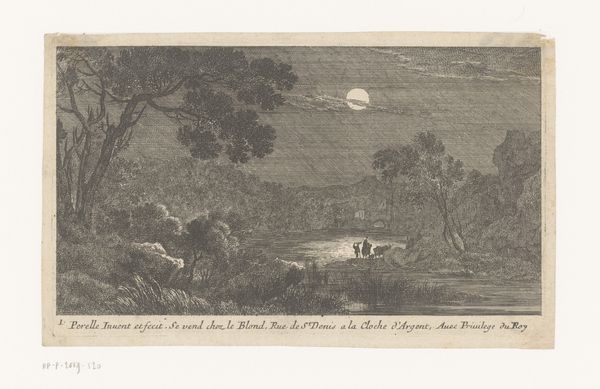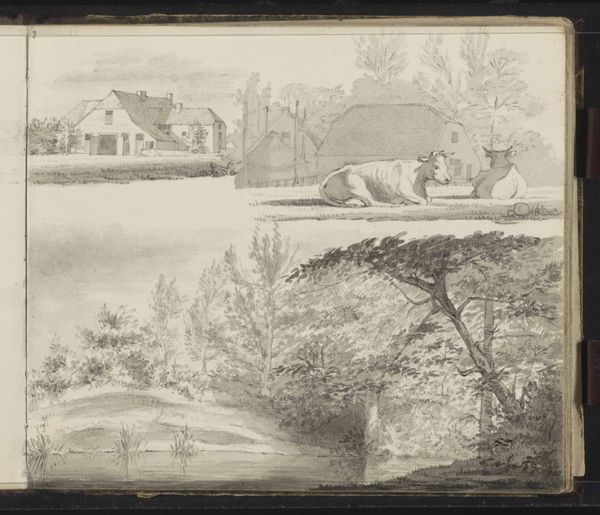
drawing, paper, ink
#
drawing
#
landscape
#
paper
#
ink
#
15_18th-century
Copyright: Public Domain
Editor: Here we have "Building by the River in Moonlight," a drawing in ink on paper by Johann Ludwig Ernst Morgenstern, part of the Städel Museum collection. I'm immediately drawn to the contrasting dark and light values, the stark difference between the sky and the ground, which gives it this eerie, romantic quality. What’s your perspective on this piece? Curator: What I find interesting is how this seemingly tranquil landscape can be read against the backdrop of its time. Think about the burgeoning industrial revolution—the stark contrast between the romanticized natural world here, depicted with a clear mastery over ink wash, and the rapid urbanization transforming society. Editor: So, is this perhaps a subtle critique of industrialization? Curator: It could be. Or a longing for something lost. Consider how the figure by the river appears isolated. Is that a representation of an individual detached from community because of new social structures that elevated capital? Look closely, it's a deliberate arrangement—perhaps an argument about humanity's alienation from nature and from itself as societal norms rapidly transformed. What emotions does the figure evoke in you? Editor: Definitely a sense of loneliness, or introspection. Now I can see a layer of social commentary that I initially missed. It goes beyond just a pretty picture. Curator: Precisely. This artist is placing nature in dialogue with the societal shifts that might threaten its very existence. The romantic elements make it deeply political when seen in this context. It provokes questions about progress and what it truly means. Editor: I now see it's much more than a pretty landscape, the artist’s technique supports their expression, and gives space to the viewer's reflection! Thank you! Curator: And thank you. Considering art with such historical awareness helps make its relevance even clearer to contemporary audiences.
Comments
No comments
Be the first to comment and join the conversation on the ultimate creative platform.
